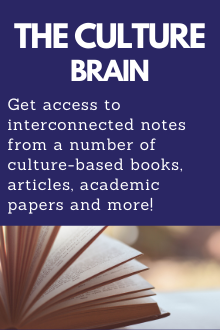A List Of Business Books On Culture That Won’t Bore You
I Love Book Lists. I Just Hate Bad Ones, Which I See Plenty Of When Looking At Lists Of Business Books On Culture.
Too many of them have the same old, same old. Others focus on the most recent trendy business books books that you NEED to check out RIGHT THIS INSTANT, falling prey to neomania.
Skip the preamble and jump to the list of workplace culture books.
Many of these are just surface level business books on corporate culture with quick tips and tricks, or organizations patting themselves on the back of how awesome their workplace culture is. I’ve seen a few of the FAANG organizations fall under this (for more on the FAANG effect, I’ve written about it in the past here). Of course, a lot of these “pat on the back” workplace culture business books don’t cover the darker side of their corporate culture, or how many of them are prone to overwork (read my thoughts on overwork here).
“If you only read the books that everyone else is reading, you can only think what everyone else is thinking.”
― Haruki Murakami, Norwegian Wood

One of the workplace culture business books I include in the list below, Tribal Leadership, had this to say about these kind of surface level books:
“Most popular business books are like log cabins, cozy and warm with a blazing fire. They’re comfortable, life affirming, and filled with snapshots of people and moments. The log cabin is built on anecdotes, however, and as we look back to fifty years of them, many have collapsed as times and economic cycles change.”
Don’t get me wrong – some of those surface level books on corporate culture are fine, but you’re far off spending your time reading books that are less surface level and look more at the core and heart of ideas. These are the ones that will challenge you, and may get you to look at the world in a different way (beyond just corporate culture).
A number of the workplace culture books I included don’t speak directly on corporate culture, but have plenty of juicy knowledge that you can make use of and apply to your own corporate culture.
Before Getting To The List Of Workplace Culture Books To Read, I Want To Recommend Some Note-Taking Systems That You Can Use.
This comes courtesy of the excellent author Ryan Holiday (while none of his books are on this list, I do recommend for you to check out his work).
The Notecard System: The Key For Remembering, Organizing And Using Everything You Read
Here’s another system that comes from Nat Eliason.
How to Take Smart Notes: A Step-by-Step Guide
Finally, one more guide you can use for taking notes from Maria Popova, author of the amazing blog Brain Pickings.
Maria Popova’s note taking system
Now, onto the list of workplace culture books.
*Note that there are affiliate links for the books below.
A number of these books I have collected notes for which you can find in the Playficient Culture Brain.
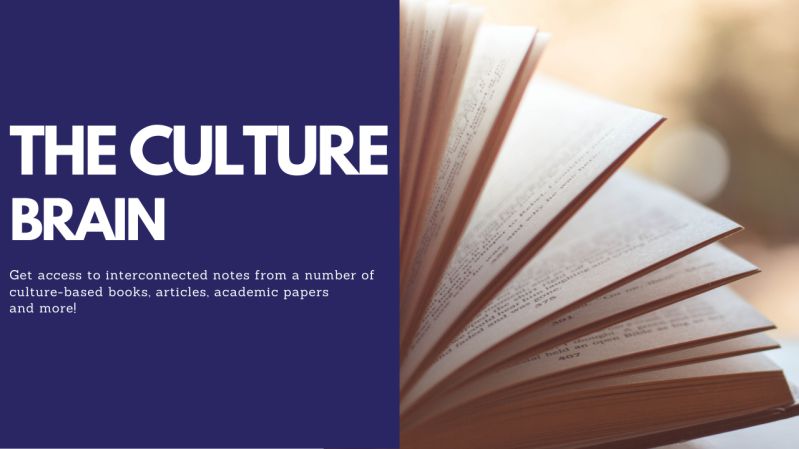
- Antifragile: Things That Gain from Disorder – Nassim Nicholas Taleb
- Bad Blood: Secrets and Lies in a Silicon Valley Startup – John Carreyrou
- The Beginning of Infinity: Explanations That Transform the World – David Deutsch
- Bowling Alone: The Collapse and Revival of American Community – Robert D. Putnam
- Built to Last: Successful Habits of Visionary Companies – James C. Collins
- Corporate Cults: The Insidious Lure of the All- Consuming Organization – Dave Arnott
- The Culture Code: The Secrets of Highly Successful Groups – Daniel Coyle
- The Design of Everyday Things – Donald A. Norman
- Disrupted: My Misadventure in the Start-Up Bubble – Dan Lyons
- Finite and Infinite Games: A Vision of Life as Play and Possibility – James P. Carse
- Good to Great: Why Some Companies Make the Leap… and Others Don’t – James C. Collins
- Homo Ludens: A Study of the Play-Element in Culture – Johan Huizinga
- How to Win Friends and Influence People – Dale Carnegie
- In Search Of Excellence: Lessons from America’s Best-Run Companies – Tom Peters
- Play: How It Shapes the Brain, Opens the Imagination, and Invigorates the Soul – Stuart M. Brown Jr.
- Quiet: The Power of Introverts in a World That Can’t Stop Talking – Susan Cain
- Remote: Office Not Required – David Heinemeier Hansson, Jason Fried
- Skin in the Game: The Hidden Asymmetries in Daily Life – Nassim Nicholas Taleb
- Small Giants: Companies That Choose to Be Great Instead of Big – Bo Burlingham
- Tribal Leadership: Leveraging Natural Groups to Build a Thriving Organization – Dave Logan
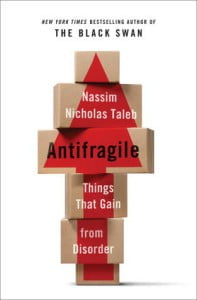
Antifragile: Things That Gain from Disorder – Nassim Nicholas Taleb
Get The Book
___
“Antifragility is beyond resilience or robustness. The resilient resists shocks and stays the same; the antifragile gets better.”
___
There are a couple of books from Nassim on this list. While all his books are phenomenal and have changed the way I view the world, this one and Skin In The Game I feel will benefit you the most if working on corporate culture. This is not a 1:1 correlation book, but there are plenty of metaphors, concepts, or ideas that you can apply from it. The Lindy Effect is one of those things I discovered from this book that’s changed how I go about choosing books to read, music to listen to, films to watch etc.
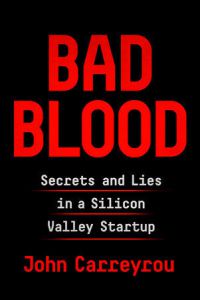
Bad Blood: Secrets and Lies in a Silicon Valley Startup – John Carreyrou
Get The Book
___
“He summed up what was going on at the company with an analogy: ” The way Theranos is operating is like trying to build a bus while you’re driving the bus. Someone is going to get killed.””
___
What sold me on this one was the blurb on the back is that it reads like a West Coast version of All The President’s Men (and if you haven’t read or watched the film All The President’s Men, change that ASAP).
The dysfunctional culture at Theranos (coming mainly from Elizabeth Holmes and and her number two, Ramesh “Sunny” Balwani) hangs heavy while reading through the story that goes from the foundations to the unraveling. The amount of secrecy involved and the levels that Theranos went after ex-employees is frightening.
While Silicon Valley has produced some advancements in our world, the startup culture it has helped foster can be incredibly damaging when you have the wrong people at the helm, and when you have people who are super obsessed with becoming Steve Jobs 2.0 and falling victim to the FAANG effect.
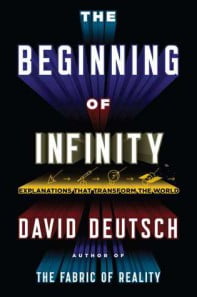
The Beginning of Infinity: Explanations That Transform the World – David Deutsch
Get The Book
___
“An unproblematic state is a state without creative thought. Its other name is death.”
___
This one is more of an out-of-left field book, but worth your time, being written by a physicist. This is one of those books where you can flip to various chapters and get something out of them. The portion about culture and memes are a great read that can be applied to your workplace, and the chapter on creativity is a great read.

Bowling Alone: The Collapse and Revival of American Community – Robert D. Putnam
Get The Book
___
“Financial capital – the wherewithal for mass marketing – has steadily replaced social capital – that is, grassroots citizen networks – as the coin of the realm.”
___
This book is not on corporate culture, but there are key takeaways that you should note. This book discusses our growing disconnection and how traditional social structures (such as Church) have disintegrated overtime, leading to higher levels of loneliness (I’ve written on the workplace loneliness here).
What’s interesting to note is that some organizations have picked up the slack on this front, but a main reason for the rise of disintegration of in traditional social structures have been due to the changing corporate landscape becoming the main identify of many people.
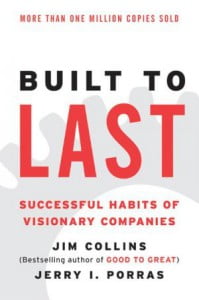
Built to Last: Successful Habits of Visionary Companies – James C. Collins
Get The Book
___
“Indeed, if there is any one “secret” to an enduring great company, it is the ability to manage continuity and change—a discipline that must be consciously practiced, even by the most visionary of companies.”
___
Continuing from Good to Great (which is featured below), I would recommend reading this one first of the two. How do organizations persevere over the years? From a strong sense of values, trying different things (until they stick), having a cult-like (but not a cult) workplace, this one is a must read. You probably have, but it’s worth another read.
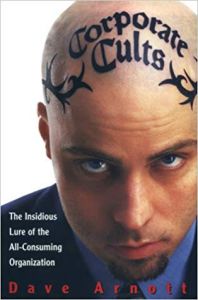
Corporate Cults: The Insidious Lure of the All- Consuming Organization – Dave Arnott
Get The Book
___
“With no one else to tell them how to live their lives, they rely on the corporation. And the corporation is only too happy to tell them. We shouldn’t be surprised when a corporation tells its members to live their lives to satisfy the corporation, considering the source of the advice.”
___
I stumbled across this one from a blog post I was reading. If there was a book in need of an update, this is one of them (it was published in 2000).
Organizations being run like cults (as opposed to cult-like, which is talked about in Good to Great and Built to Last, two books featured on this list) as only increased since then. I would love to see an updated edition that focuses on how millennials have dealt with the rise of cult organizations, as the book, published in 2000, looks mostly at Gen X.
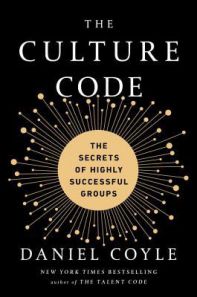
The Culture Code: The Secrets of Highly Successful Groups – Daniel Coyle
Get The Book
___
“The road to success is paved with mistakes well handled.”
___
One of the main things why I recommend this book are the stories they pull from, from Gregg Popvitch to Navy seals, and tying them in and how you can make use of their ideas with your corporate culture.
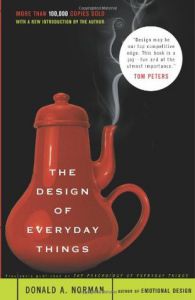
The Design of Everyday Things – Donald A. Norman
Get The Book
___
“A brilliant solution to the wrong problem can be worse than no solution at all: solve the correct problem.”
___
If people ask me about design thinking books, this is the one I point them towards. While it’s not on design thinking specifically (in fact, I’ve yet to find a really good book on design thinking that I would add to this list), it does have the aspects that lay the foundation of design thinking, and has stood the test of time.
See our post on how to use the design thinking process to improve your employee experience.

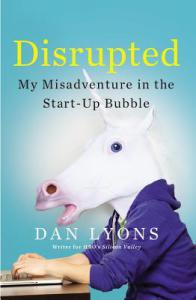
Disrupted: My Misadventure in the Start-Up Bubble – Dan Lyons
Get The Book
___
“This is the New Work, but really it is just a new twist on an old story, the one about labor being exploited by capital. The difference is that this time the exploitation is done with a big smiley face.”
___
A journalist in his early 50s gets laid off after a couple of decades in the newsroom takes his talents to Hubspot, a startup in Boston.
Hubspot has every clicheof the “millennial silicon valley” workplace.
Being more than twice the average age, we get a funny yet chilling glimpse of a boomer making his way in the unfamiliar world of the tech startup, and gives a fresh perspective on the dangers of these often-copied corporate cultures.
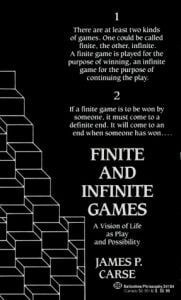
Finite and Infinite Games: A Vision of Life as Play and Possibility – James P. Carse
___
“Finite players play within boundaries; infinite players play with boundaries.”
___
This one is an odd duck of a book, but one that will stick with you. Plus, it’s a fairly quick read. The idea of finite and infinite games can help influence you in how you build out your workplace culture. I have a hard time trying to explaining this one to people which makes it a harder sell, but give it a read. You won’t regret it.
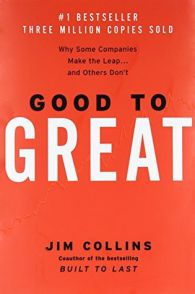
Good to Great: Why Some Companies Make the Leap… and Others Don’t – James C. Collins
___
“The good-to-great leaders never wanted to become larger-than-life heroes. They never aspired to be put on a pedestal or become unreachable icons. They were seemingly ordinary people quietly producing extraordinary results.”
___
Read this one before Built To Last. The book breaks down the importance of Level-5 leadership, and how important it is to get the right people on your team, and give them autonomy in problem solving. What’s great about this book is it includes organizations that made all the right decisions and prospered, while also featuring their competitors and how they failed. Great to see the contrast. While they may not be modern examples, the timeless principles are the same.

Homo Ludens: A Study of the Play-Element in Culture – Johan Huizinga
Get The Book
___
“In play there is something “at play” which transcends the immediate needs of life and imparts meaning to the action. All play means something. If we call the active principle that makes up the essence of play, “instinct”, we explain nothing; if we call it “mind” or “will” we say too much. However we may regard it, the very fact that play has a meaning implies a non-materialistic quality in the nature of the thing itself.”
___
This is an interesting read on how play has had an impact on our culture and society throughout human history. This is not a “15 ways to make your workplace more playful” book (although we have a blog post to get you started), but a deep study of how play has shaped our history. Not a 1:1 correlation book, but a very worthwhile read.
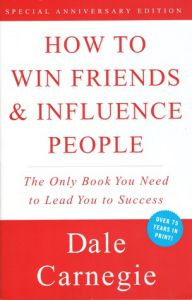
How to Win Friends and Influence People – Dale Carnegie
Get The Book
___
“To be interesting, be interested.”
___
Yes, this one is on here, and for good reason. People have been reading this for well over 80 years (the Lindy Effect in action). Learning how to listen and understand (empathy) what people want will go a long way in creating a better employee experience. If you have this one on hand, read it again.
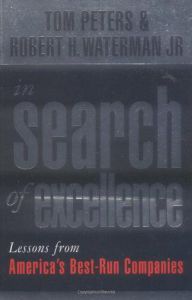
In Search Of Excellence: Lessons from America’s Best-Run Companies – Tom Peters
Get The Book
___
“Far too many managers have lost sight of the basics, in our opinion: quick action, service to customers, practical innovation, and the fact that you can’t get any of these without virtually everyone’s commitment.”
___
Considered by some the greatest business book of all time. Would I go that far? I don’t think so, but it’s a no-brainer to have on your shelf. While some of the organizations featured here are nowhere near their power of where they were when this was written (IBM and HP are featured prominently), you have to remember that these organizations were thriving for decades, and well worth examining why they were able to do so well.
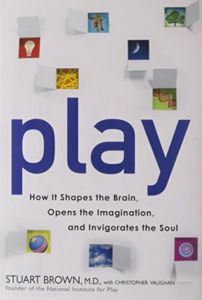
Play: How It Shapes the Brain, Opens the Imagination, and Invigorates the Soul – Stuart M. Brown Jr.
Get The Book
___
“Stepping out of a normal routine, finding novelty, being open to serendipity, enjoying the unexpected, embracing a little risk, and finding pleasure in the heightened vividness of life. These are all qualities of a state of play.”
___
Stuart Brown is arguably the foremost expert in the world on how play benefits our lives. His work is where the eight play personalities comes from, something which I use with our service on creating more playful workplaces.
I’ve written about how to make use of the eight play personalities in the workplace, which you can read here.

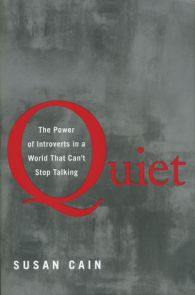
Quiet: The Power of Introverts in a World That Can’t Stop Talking – Susan Cain
Get The Book
___
“There’s zero correlation between being the best talker and having the best ideas.”
___
The book breaks down the myth that leaders need to be extroverts. Other books on here (like Good to Great), cover the idea – this book here comes more in-depth about the research behind it.
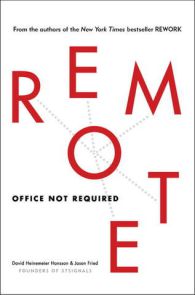
Remote: Office Not Required – David Heinemeier Hansson, Jason Fried
Get The Book
___
“You can’t let your employees work from home out of fear they’ll slack off without your supervision, you’re a babysitter, not a manager. Remote work is very likely the least of your problems.”
___
Well, they were ahead of the curve on this one by a number of years. 37signals, best known for basecamp, managed to thrive outside the traditional Silicon Valley model. On the regular, they like to mock Silicon Valley (much to my amusement). By now you probably have a much better understanding of getting remote work to, well, work. Still, it’s worth a read, as it’s short and to the point.
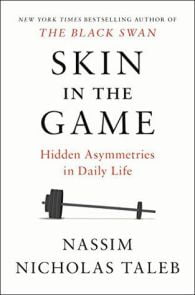
Skin in the Game: The Hidden Asymmetries in Daily Life – Nassim Nicholas Taleb
Get The Book
Book Summary From Four Minute Books
___
“If you do not take risks for your opinion, you are nothing.”
___
Nassim is one of the few authors that I’ve read over the last few years that I can say has had a large impact on how I view the world. One of our core values at Playficient is named after this book.
Talk is cheap, so if you’re going to do something, you should be willing to risk your reputation. Too many organizations will have leadership take risks, have it backfire, and not take the fall, having that instead fall to employees. I come back to this one again and again and find something new or profound.
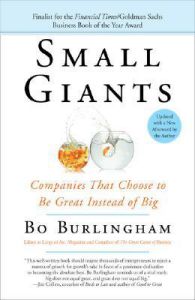
Small Giants: Companies That Choose to Be Great Instead of Big – Bo Burlingham
I always like to hear about the cases that the media or books overlook (most focus far too much on tech organizations) or organizations who are doing well while staying small.
This book looks at a number of organizations who have thrived while remaining small, and how they’ve been able to do so. You don’t need to be a $100 billion dollar organization to be successful (despite what others love to say).
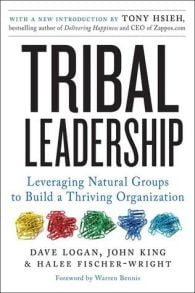
Tribal Leadership: Leveraging Natural Groups to Build a Thriving Organization – Dave Logan
Get The Book
Book Summary From Four Minute Books
___
“The gulf between “I’m great” (Stage Three) and “we’re great” (Stage Four) is huge, Grand Canyon huge. This level represents 22 percent of workplace tribal cultures, where the theme of people’s communication is “we’re great.”
___
I can’t remember which book recommended that I read this one, but I’m glad I did. One I will come back to over and over again. It will get you to look at organizations in a different way by the stages of tribes. I can’t recommend this one high enough. You will be taking of ton of notes from this book.


